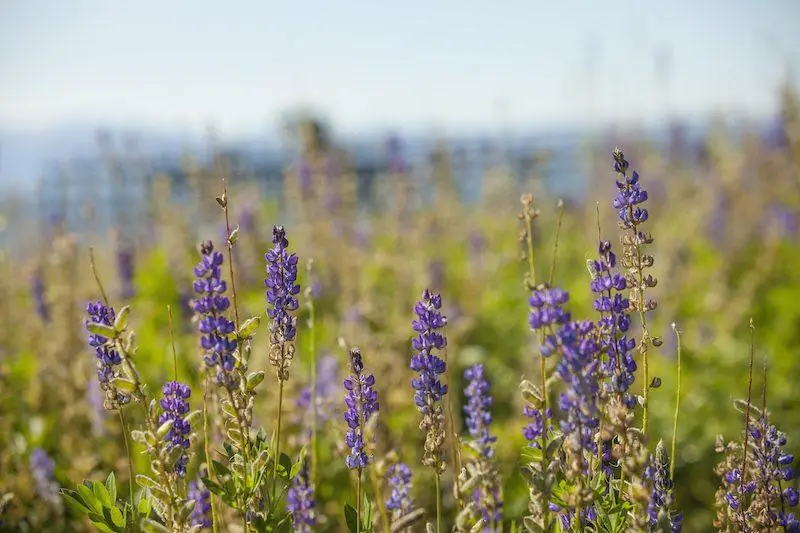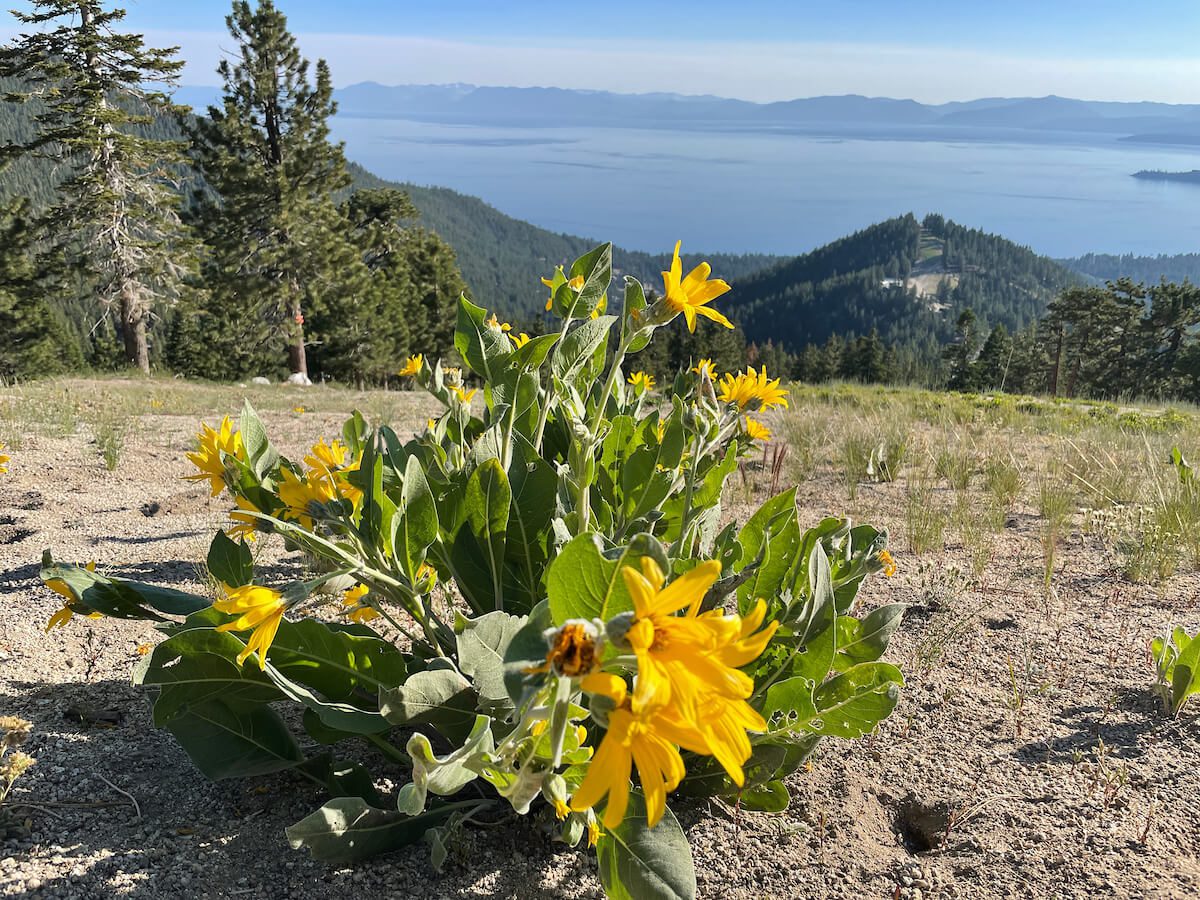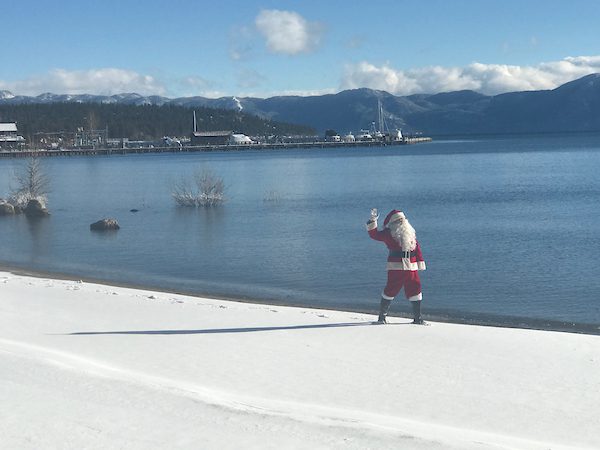The plentiful wildflowers of Lake Tahoe offer an unforgettable experience for hikers to witness the bright, playful color palette of the Sierra Nevada come to life. Mountain elevation and orientation are largely responsible for the diverse types of flowers you’ll find, so if you know where to look, you can find these beautiful wildflowers several times a year. Read on to learn more about native blooms and for our guide to the best wildflower hikes in Lake Tahoe.
Why Lake Tahoe Wildflowers Bloom
The Elevation – Many visitors expect abundant wildflower booms in May, though this isn’t the case in the Sierra Nevada. Lake Tahoe’s bloom season for wildflowers is more unpredictable than most US locations, as our wildflowers bloom within specific elevation ranges at specific times of the year.
There are many species of wildflowers that grow at nearly any elevation in Tahoe. Woolly Mule’s Ears can be found growing at high and low elevations. However, many wildflowers (especially unique ones) have a very specific elevation range at which they’ll flourish.
The Previous Winter – If the previous winter has yielded a good amount of snow, then the runoff will continue to provide water to plants needing a wetter environment to thrive. Wildflowers that need more water generally are found at higher elevations, such as the striking, bright orange Sierra Tiger Lily (also known as the Alpine lily).
Winters with heavy snow fall can also delay the bloom season by 1-2 months. Even after a big winter, come July, the lower elevations will still be dry and showing signs of summer blooming.

Head Out on a Hike
Check out our many trails then pack for a day of traversing our spaces and get out and discover the wild (flower) side of Lake Tahoe. There are varying levels of difficulty, and even the most experienced hikers need to take extra care when preparing for a springtime hike. Check out our Know Before You Go page to make sure you are aware of current weather conditions, any trail advisories and more.
Palisades Tahoe Trails
Palisades Tahoe maximizes the summer season with a multitude of activities. We recommend taking a cable car up to High Camp for an easy day hike surrounded by freshly bloomed wildflowers. This location offers six individual trails that all vary from 1-4 miles. The wildflowers in this area include blue gentians and white thimble berries.
Mt. Rose Trail
On the Mt. Rose Trail hike, you can spot wildflowers including the red alpine paintbrush, white-purple lupine and pink fireweed blooming along the trail and spread across the peak. This slightly strenuous climb isn’t for the faint of heart, but well worth the heart pumping 6-mile uphill trek. Along your way to the top, you’ll be treated to many natural splendors including a stellar view and smatterings of unbelievably unique wildflower patches.
Page Meadows
Another local favorite is Page Meadows, which can be accessed from 64 acres in Tahoe City. This expansive subalpine meadow offers dozens of wildflowers as well as breathtaking views. This is a great one if you’re hiking with kids or dogs, as the elevation is extremely minimal and the hike itself is not a difficult one. Our recommendation? Take TART to the transit center and hike from there – it’s an easy way for you to kick back and relax while also doing your part for the preservation of Lake Tahoe’s natural beauty.
Marlette Lake Trail
If you’re looking for something slightly more challenging, Marlette Lake Trail is a moderate 5-mile uphill hike that ends at Marlette Lake Dam. The gorgeous wildflowers along this trek include pink bog mallow, pink yarrow and various lavender flowers. This trail gives hikers the opportunity to take in all the wonderful smells of fragrant wildflowers and enjoy a killer view of Marlette Lake at the top.
Tahoe Meadows Trail
This looping, gentle trail is ideal for families with children or simply those who prefer a less strenuous hiking experience. While there is no particular destination on this trail, it’s truly the journey that counts — you’ll be able to stroll through sweeping subalpine meadows and take in vibrant displays of wildflowers and leafy trees with the chatter of songbirds as your soundtrack. The whole loop takes around an hour, making it the perfect midday activity before evening falls.
Northstar California
Another popular resort in the Lake Tahoe area, Northstar is conveniently near a variety of trails with incredible floral views. The resort itself enjoys fantastic wildflower growth in the warmer months, so you won’t have to go far before you can start enjoying the beauty of naturally occurring flowers. Take some time to wander the resort’s grounds before heading out on one of the nearby hikes they recommend.
Cascade Falls Trail
Cascade Falls offers hikers a moderately challenging trail with a huge reward waiting at the end. You’ll spend the hike winding through forested areas and rocky steps abounding with vibrant wildflowers. Once you reach the end, you will be greeted by the sight of a tumbling waterfall dropping more than 65 feet over dark rocks. Plus, the trail features incredible views of Lake Tahoe and Emerald Bay, making this a truly memorable hike any time of the year.
Tahoe Rim Trail
Perhaps one of the most well-known trails in Lake Tahoe, the Tahoe Rim Trail is exactly what it sounds like — a trail that circles the entirety of Lake Tahoe. The entire trail spans 165 miles, but there are many smaller trails and offshoots within the larger loop that are popular for a variety of reasons. When it comes to seeing wildflowers, you have plenty to choose from: a trail such as the Ophir Creek Loop Hike, for example, is easy, non-challenging and teeming with life.
Vikingsholm Trail
The popular Emerald Bay State Park is home to a multitude of wonders, such as the historic Vikingsholm Castle, a sweeping example of 1920s-era Scandinavian architecture that still stands proud today. If you are entering Emerald Bay via the Vikingsholm parking lot, you’ll have the opportunity to traverse the Vikingsholm Trail, a somewhat short trail totaling around a mile. Along the trail, you’ll see cascading waterfalls, grand views of the beach and of course, plenty of natural wildflower growth.
Après-Hike: Unwind After Your Adventure
Everyone knows one of the best parts of a ski trip is the après ski — so why should ski season be the only time we do it? Lake Tahoe has plenty of fantastic options for ways to unwind post-hike, any time of the year. Once you’ve wrapped up your search for wildflowers, head into one of Lake Tahoe’s 12 unique towns to get yourself a treat. Feeling particularly thirsty? The Lake Tahoe Ale Trail has you covered. Utilize the interactive map and video to check out one of the many watering holes close to wherever your hiking adventure takes you.
After a day spent hiking the mountains, dining close to the lake is a great way to round out your experience. And for those of you adventuring with your four-legged friends at your side, Lake Tahoe also has a wide variety of pet-friendly restaurants that will welcome you and your companion with open arms.

Make a Clear Difference in Lake Tahoe
When you embark on any kind of outdoor adventure in Lake Tahoe, keep in mind that it is imperative to protect the natural environment of this beautiful region. It’s up to travelers and locals alike to take actionable steps to protect Lake Tahoe. While you enjoy your wildflower hike, remember: look, don’t touch. Do not disturb the local flora or fauna. Refrain from picking flowers, moving rocks around, approaching animals or any other actions that could interfere with the natural environment. Also, remember to pack out everything you pack in — do not leave trash or gear on the trails. For more tips on being a steward of Lake Tahoe, head to our Make a Clear Difference page.
Plan Your True Tahoe Escape
No matter when you plan your stay, Lake Tahoe offers incredible experiences you won’t find anywhere else. Book your stay today and discover the wonder of a True Tahoe escape. We’ll see you soon.









